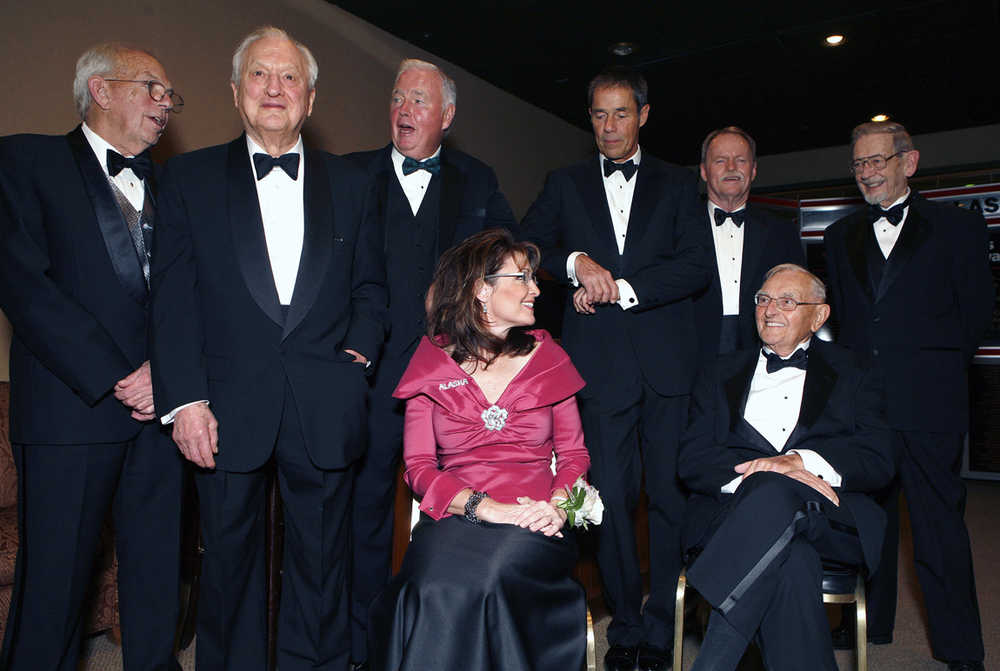JUNEAU — This week, Bill Walker became the 13th governor of Alaska. Or the 11th. Or 16th. Depends on how you count.
As it turns out, the state of Alaska doesn’t appear to have an official way of counting governors and their terms.
Since statehood in 1959, two men, Bill Egan and Wally Hickel, served non-consecutive terms. Three — Egan, Jay Hammond and Tony Knowles — served back-to-back terms.
When asked which number Walker holds, the state historian, Jo Antonson, said she was unaware of how Alaska counts governors. The director of the state Division of Libraries, Archives and Museums, Linda Thibodeau, didn’t know, either.
Antonson suggested the Division of Elections might know, but director Gail Fenumiai said her “totally uneducated” guess would be that if governors were elected in non-consecutive terms, they would be counted as new governors.
That would make Walker Alaska’s 13th governor.
But in the Hall of Governors — on the third floor of the state Capitol, outside the governor’s office — 14 portraits hang, including Walker’s.
The first two portraits are for Egan, who initially served between January 1959 and December 1962. Alaska was officially admitted into the union in January 1959. His second portrait is for his term from December 1962 to December 1966.
Hickel was elected in 1966 but left during his term to serve as U.S. Secretary of Interior. Keith Miller, who replaced Hickel, is shown on the fourth spot in the hall. Egan is shown again in the fifth slot for serving from 1970 to 1974.
Under the constitution, a governor who serves two full successive terms cannot serve again until a full term has passed. A term is defined as four years, beginning and ending at noon on the first Monday in December.
Hammond and Knowles are represented on the wall by one photo for their consecutive terms. Hickel has two photos for his non-consecutive terms.
The National Governors Association, on its website, lists 11 entries for governor of Alaska but doesn’t assign numbers to the office holders.
Scott Buchanan, an associate professor of political science at The Citadel, said as far as he can tell, it’s up to each state to decide how it counts its governors. All but one of the original 13 states count from independence — South Carolina’s count begins before that — while states 14 through 50 tend to count from statehood, he said.
State Sen. Dennis Egan, son of the late Bill Egan, had no idea why there are photos for each of his father’s back-to-back terms, but he considers his father the first, second and fifth governor. Egan thinks governors should be counted by their terms.
If that’s the case, Walker would be the 16th governor. Or maybe the 17th, if you counted the year-plus that Sean Parnell served as governor after Sarah Palin resigned during her first term in addition to the full term Parnell served.
In the end, Egan said it doesn’t really matter.
“They were governor,” he said.

